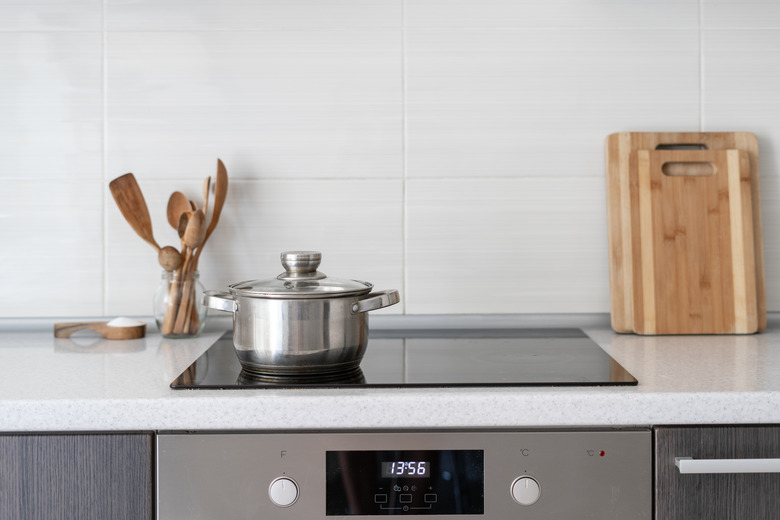How Does An Electric Stove Work?
Unlike gas stoves, electric stove tops don't produce a flame. Instead, an electric current causes a heating element to activate. If your stove has coils, the heat transfers directly from these coils to your cookware. If your stove has a glass or ceramic top, the heat emanates to this cover and then transfers to your pots and skillets.
Tip
Electric stoves work via a circuit that — when closed — produces heat. That heat then transfers to your cookware via coils or a smooth top.
The Electric Stove Top Circuit
The Electric Stove Top Circuit
Each heating element on your electric stove (typically four or five in total) connects to its own control switch. When this switch is turned on, it closes the circuit by connecting two "legs," each with 120 volts of alternating current. Electric current travels down each leg, and when this current collides in the heating element, heat is produced.
A temperature switch also exists as part of this circuit, which allows you to easily adjust the heat output for your electric stove top. When the specified temperature is reached, the circuit will open and current will no longer be supplied to the heating element. But, when the temperature cools down too much, the circuit will close again to supply more heat. Because each burner represents its own circuit, you can remove and replace one faulty burner instead of replacing the entire stove.
Conventional Coils vs. Radiant Heat
Conventional Coils vs. Radiant Heat
All electric stoves use the same basic circuitry to produce heat. But, in the case of ceramic stove tops, the heating element is hidden under a smooth surface. Is there a significant difference between using conventional coils versus radiant heat? In terms of performance, the major difference is that conventional coils may heat up their surroundings, whereas a smooth-top stove is more efficient because it tends to heat just the pot.
Other reasons why people may decide to choose radiant heating versus an electric coil stove include ease of cleaning and aesthetics. However, conventional coils are much easier to access in order to replace or repair them, and they tend to be cheaper than ceramic or glass stove tops.
Are Electric Stoves Better Than Gas?
Are Electric Stoves Better Than Gas?
Knowing the internal functions of an electric stove might make you wonder if gas stoves actually work better. Truthfully, it comes down to personal preference. Direct flames from gas burners may heat your cookware faster than the heating elements in electric stoves, and it's easier to keep flames at a steady height and maintain a specific temperature. Another perk of a gas stove is that you can continue to use it by lighting the gas with a match if your electricity goes out.
Not everyone feels comfortable having an open flame in the kitchen, though, and gas stove tops can be difficult to clean. It's also worth visiting the U.S. Bureau of Labor Statistics' website to compare the average energy costs for your area before you make a switch to or from a gas stove. In many areas, natural gas is more expensive than electricity. It's up to you to weigh the pros and cons of electric versus gas stoves — and conventional versus radiant electric stoves — to decide which one is right for you.
